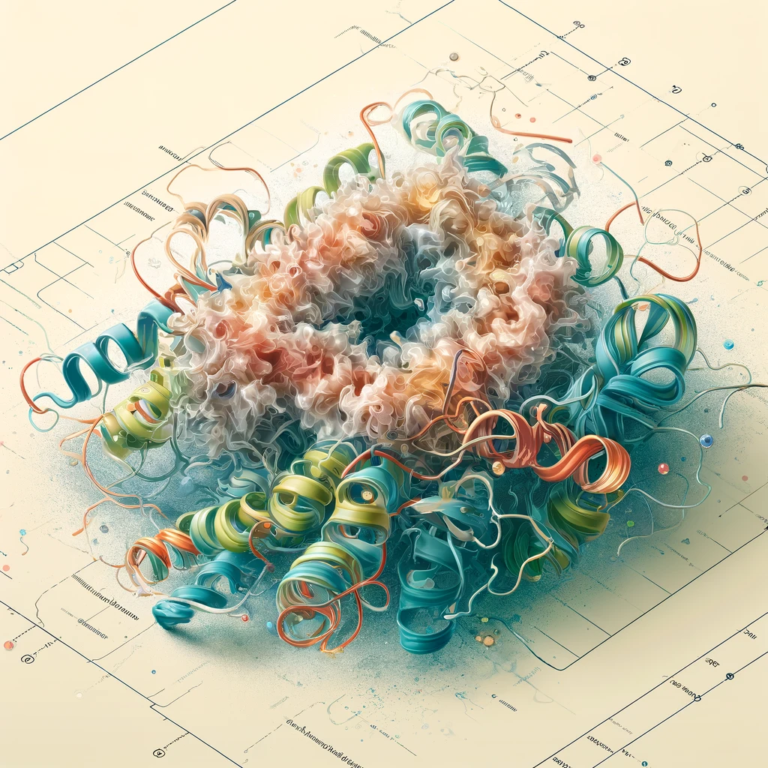Advanced Metal-Organic Frameworks
This review delves into Metal-Organic Frameworks (MOFs), concentrating on their synthesis, distinctive characteristics, and diverse applications in gas storage, catalysis, and drug delivery, while emphasizing their transformative promise in materials science and engineering.

Introduction to MOFs
Metal-Organic Frameworks (MOFs) are a type of material that has received a lot of attention due to its unique structure, which consists of metal ions coupled with organic ligands (Mondloch et al., 2013). These structures generate porous networks with large surface areas, making them suitable for a variety of applications including gas storage and separation (Lin et al., 2021). MOFs’ porous and adjustable features make them promising for applications such as catalysis, gas storage, and separation (Altıntaş et al., 2021). They are recognized for their ability to store and trap guest molecules within their pore spaces (Lin et al., 2021).
The versatility of MOFs stems from their capacity to be modified for specific applications. Altıntaş et al. (2021) suggest using high-throughput computational screening methods to build novel MOFs for various applications. MOFs can be manufactured in one or more dimensions by joining metal ions or clusters with organic linkers, enabling for a variety of applications in energy, medicine delivery, and wastewater treatment (Yusuf et al., 2022). Because of their high porosity and customisable chemical components, these materials have been investigated for use in renewable energy, environmental cleanup, and gas storage (Zhang et al., 2017).
MOFs have also been studied for their use in supercapacitors, selective catalytic reduction, and high-density gas storage (Gao et al., 2021; Ko et al., 2022; Connolly et al., 2020). Their large surface area, adjustable pore size, and numerous chemical capabilities make them ideal for a variety of catalytic applications (Ko et al., 2022). Furthermore, MOFs have been investigated for their adsorption properties, with an emphasis on developing materials for effective gas storage and separation (Carney et al., 2020; Lin et al., 2016). MOFs’ adjustable nature enables the creation of functional molecular materials with precise adsorption properties (Wang et al., 2013).
In recent years, there has been a rise of interest in using MOFs for clean energy, catalysis, sensing, electronics, and biomedicine (Meng and Wang, 2018). Because of their highly organized crystalline structure and capacity to enclose molecules within their frameworks, these materials have numerous applications (Han et al., 2020). Furthermore, the design flexibility of MOFs achieved by crystal engineering methodologies has created new opportunities for adapting these materials for specific applications (Lian et al., 2012).
MOFs are a promising family of materials with a wide range of applications due to their unique structure, high porosity, and customizable characteristics. Researchers are still exploring and innovating with MOFs to fully realize their potential for applications ranging from energy storage to environmental remediation.
Synthesis Methods of MOFs
Synthesis methods are critical for tailoring the characteristics of Metal-Organic Frameworks (MOFs) to specific applications. MOF synthesis has been achieved via a variety of approaches, each with its own set of advantages. Solvothermal synthesis, a widely used technique, includes the reaction of metal ions with organic ligands in a solvent at high temperatures and pressures, resulting in the creation of MOF crystals Xia et al. (2018). This approach provides fine control over the size, shape, and porosity of the resultant MOFs, which influences their application efficiency.
Sonochemical synthesis, as shown in the synthesis of MOF-5, uses ultrasound to trigger chemical reactions, resulting in faster creation of MOF structures than traditional solvothermal approaches (Son et al., 2008). Microwave-assisted synthesis has also emerged as an important technology for MOF synthesis, enabling the quick and efficient creation of MOFs with regulated characteristics (Phan et al., 2023). This approach has gained popularity because of its potential to speed up the synthesis process and improve the characteristics of MOFs for a variety of applications.
Furthermore, electrochemical synthesis methods have been devised to enable the quick and cost-effective manufacturing of MOFs with improved performance characteristics. For example, electrochemical production of UiO-66-NH2 has been found to increase fluorescence detection capability, highlighting the method’s potential for adapting MOF features to specific applications (Wei et al., 2019).
The choice of synthesis process has a considerable impact on the characteristics and performance of MOFs. Researchers are constantly researching and perfecting different synthesis strategies to tailor MOFs for a variety of applications, including gas storage, sensing, and catalysis. Each technique has distinct advantages in terms of efficiency, property control, and scalability, thereby helping to the advancement of MOF research and applications.
Applications of MOFs
Metal-Organic Frameworks (MOFs) have developed as versatile materials with wide-ranging uses, such as medication delivery, catalysis, and gas storage. MOFs’ unique features, such as large surface area and variable pore diameters, make them suited for numerous applications, demonstrating their versatility.
MOFs have received a lot of attention in drug delivery because of their tunable physiochemical properties, biocompatibility, and capacity to encapsulate large amounts of active compounds (Lawson et al., 2021). Researchers investigated the design of MOFs for various drug delivery applications, with a focus on surface modification, drug carriers, and biocompatibility (Liu et al., 2021). MOFs have been studied as drug delivery vehicles in cancer treatment, with an emphasis on improving drug loading capacity and tailored delivery (Cai et al., 2020). MOFs offer biocompatibility, high drug loading, and active tumor-targeting properties, making them promising for tumor theranostics (Carrillo-Carrión, 2019).
Furthermore, MOFs have been used in controlled drug delivery systems that respond to stimuli such as pH, temperature, or pressure to control drug release (Suresh & Matzger, 2019). MOFs as nanocarriers for drug administration have been intensively studied, with a focus on their high drug-loading capacity and biocompatibility (Zong et al., 2022). MOFs have been designed for combined drug delivery, defect-controlled drug release, and redox-responsive drug delivery systems, demonstrating their potential in personalized medicine and theranostics (Lázaro et al., 2020; Lei et al., 2018; Lázaro et al., 2020).
In the field of catalysis, MOFs have showed promise as efficient drug delivery carriers, suppressing cancer cells and providing targeted drug delivery options (Song et al. 2018). The controlled production of porous MOFs has enabled the encapsulation of cations, resulting in tunable luminescence and efficient drug delivery (Wang et al., 2013). MOFs have been studied for luminescence, separation, gas adsorption, and catalytic characteristics, demonstrating their adaptability in a variety of applications, including drug delivery (Wang et al., 2013).
Overall, MOFs’ various uses in drug delivery, catalysis, and gas storage demonstrate their potential as multifunctional materials with customizable features. The ongoing research and development of MOFs for specific applications demonstrates the increasing interest and potential of these materials in improving many fields.
References:
Altıntaş, Ç., Altundal, O., Keskın, S., & Yıldırım, R. (2021). Machine learning meets with metal organic frameworks for gas storage and separation. Journal of Chemical Information and Modeling, 61(5), 2131-2146. https://doi.org/10.1021/acs.jcim.1c00191
Cai, M., Chen, G., Qin, L., Qu, C., Dong, X., Ni, J., … & Yin, X. (2020). Metal organic frameworks as drug targeting delivery vehicles in the treatment of cancer. Pharmaceutics, 12(3), 232. https://doi.org/10.3390/pharmaceutics12030232
Carney, J., Roundy, D., & Simon, C. (2020). Statistical mechanical model of gas adsorption in a metal–organic framework harboring a rotaxane molecular shuttle. Langmuir, 36(43), 13112-13123. https://doi.org/10.1021/acs.langmuir.0c02839
Carrillo‐Carrión, C. (2019). Nanoscale metal–organic frameworks as key players in the context of drug delivery: evolution toward theranostic platforms. Analytical and Bioanalytical Chemistry, 412(1), 37-54. https://doi.org/10.1007/s00216-019-02217-y
Connolly, B., Madden, D., Wheatley, A., & Fairen‐Jimenez, D. (2020). Shaping the future of fuel: monolithic metal–organic frameworks for high-density gas storage. Journal of the American Chemical Society, 142(19), 8541-8549. https://doi.org/10.1021/jacs.0c00270
Gao, H., Shen, H., Wu, H., Jing, H., Sun, Y., Liu, B., … & Hao, Q. (2021). Review of pristine metal–organic frameworks for supercapacitors: recent progress and perspectives. Energy & Fuels, 35(16), 12884-12901. https://doi.org/10.1021/acs.energyfuels.1c01722
Han, L., Shi, L., Li, C., Fu, X., Huang, Q., & Zhang, B. (2020). Metal–organic framework based on α-cyclodextrin gives high ethylene gas adsorption capacity and storage stability. Acs Applied Materials & Interfaces, 12(30), 34095-34104. https://doi.org/10.1021/acsami.0c08594
Ko, S., Gao, F., Yao, X., Yi, H., Tang, X., Wang, C., … & Qi, Z. (2022). Synthesis of metal–organic frameworks (mofs) and their application in the selective catalytic reduction of nox with nh3. New Journal of Chemistry, 46(33), 15758-15775. https://doi.org/10.1039/d2nj02358j
Lawson, H., Walton, S., & Chan, C. (2021). Metal–organic frameworks for drug delivery: a design perspective. Acs Applied Materials & Interfaces, 13(6), 7004-7020. https://doi.org/10.1021/acsami.1c01089
Lei, B., Wang, M., Jiang, Z., Qi, W., Su, R., & He, Z. (2018). Constructing redox-responsive metal–organic framework nanocarriers for anticancer drug delivery. Acs Applied Materials & Interfaces, 10(19), 16698-16706. https://doi.org/10.1021/acsami.7b19693
Lian, M., Cheng, Q., Kim, C., Gao, W., Wojtas, Ł., Chen, Y., … & Ma, S. (2012). Crystal engineering of a microporous, catalytically active fcu topology mof using a custom‐designed metalloporphyrin linker. Angewandte Chemie, 51(40), 10082-10085. https://doi.org/10.1002/anie.201205603
Lin, R., Zhang, Z., & Chen, B. (2021). Achieving high performance metal–organic framework materials through pore engineering. Accounts of Chemical Research, 54(17), 3362-3376. https://doi.org/10.1021/acs.accounts.1c00328
Lin, Y., Kong, C., Zhang, Q., & Chen, L. (2016). Metal‐organic frameworks for carbon dioxide capture and methane storage. Advanced Energy Materials, 7(4). https://doi.org/10.1002/aenm.201601296
Liu, X., Liang, T., Zhang, R., Ding, Q., Wu, S., Li, C., … & Zhou, M. (2021). Iron-based metal–organic frameworks in drug delivery and biomedicine. Acs Applied Materials & Interfaces, 13(8), 9643-9655. https://doi.org/10.1021/acsami.0c21486
Lázaro, I., Wells, C., & Forgan, R. (2020). Multivariate modulation of the zr mof uio‐66 for defect‐controlled combination anticancer drug delivery. Angewandte Chemie, 132(13), 5249-5255. https://doi.org/10.1002/ange.201915848
Lázaro, I., Wells, C., & Forgan, R. (2020). Multivariate modulation of the zr mof uio‐66 for defect‐controlled combination anticancer drug delivery. Angewandte Chemie, 59(13), 5211-5217. https://doi.org/10.1002/anie.201915848
Meng, H. and Wang, C. (2018). Molecular fullerenes encapsulated in metal-organic frameworks. General Chemistry, 4(4), 180019. https://doi.org/10.21127/yaoyigc20180019
Mondloch, J., Bury, W., Fairen‐Jimenez, D., Kwon, S., DeMarco, E., Weston, M., … & Hupp, J. (2013). Vapor-phase metalation by atomic layer deposition in a metal–organic framework. Journal of the American Chemical Society, 135(28), 10294-10297. https://doi.org/10.1021/ja4050828
Phan, P., Hong, J., Tran, N., & Le, T. (2023). The properties of microwave-assisted synthesis of metal–organic frameworks and their applications. Nanomaterials, 13(2), 352. https://doi.org/10.3390/nano13020352
Son, W., Kim, J., Kim, J., & Ahn, W. (2008). Sonochemical synthesis of mof-5. Chemical Communications, (47), 6336. https://doi.org/10.1039/b814740j
Song, B., Ding, X., Li, C., & An, G. (2018). A porous zn2(abct) framework as an efficient carrier for 5‐fu delivery and inhibiting human liver cancer cells. Zeitschrift Für Anorganische Und Allgemeine Chemie, 644(10), 472-476. https://doi.org/10.1002/zaac.201800059
Suresh, K. and Matzger, A. (2019). Enhanced drug delivery by dissolution of amorphous drug encapsulated in a water unstable metal–organic framework (mof). Angewandte Chemie, 58(47), 16790-16794. https://doi.org/10.1002/anie.201907652
Wang, C., Liu, D., & Lin, W. (2013). Metal–organic frameworks as a tunable platform for designing functional molecular materials. Journal of the American Chemical Society, 135(36), 13222-13234. https://doi.org/10.1021/ja308229p
Wang, Y., Yang, J., Liu, Y., & Ma, J. (2013). Controllable syntheses of porous metal–organic frameworks: encapsulation of lniii cations for tunable luminescence and small drug molecules for efficient delivery. Chemistry – A European Journal, 19(43), 14591-14599. https://doi.org/10.1002/chem.201300144
Wei, J., Gong, F., Sun, X., Li, Y., Zhang, T., Zhao, X., … & Zhang, F. (2019). Rapid and low-cost electrochemical synthesis of uio-66-nh2 with enhanced fluorescence detection performance. Inorganic Chemistry, 58(10), 6742-6747. https://doi.org/10.1021/acs.inorgchem.9b00157
Xia, Q., Wang, H., Huang, B., Yuan, X., Zhang, J., Zhang, J., … & Zeng, G. (2018). State‐of‐the‐art advances and challenges of iron‐based metal organic frameworks from attractive features, synthesis to multifunctional applications. Small, 15(2). https://doi.org/10.1002/smll.201803088
Yusuf, V., Malek, N., & Kailasa, S. (2022). Review on metal–organic framework classification, synthetic approaches, and influencing factors: applications in energy, drug delivery, and wastewater treatment. Acs Omega, 7(49), 44507-44531. https://doi.org/10.1021/acsomega.2c05310
Zhang, H., Nai, J., Yu, L., & Lou, X. (2017). Metal-organic-framework-based materials as platforms for renewable energy and environmental applications. Joule, 1(1), 77-107. https://doi.org/10.1016/j.joule.2017.08.008
Zong, Z., Tian, G., Wang, J., Fan, C., Yang, F., & Guo, F. (2022). Recent advances in metal–organic-framework-based nanocarriers for controllable drug delivery and release. Pharmaceutics, 14(12), 2790. https://doi.org/10.3390/pharmaceutics14122790



